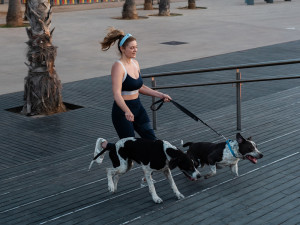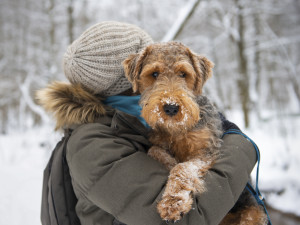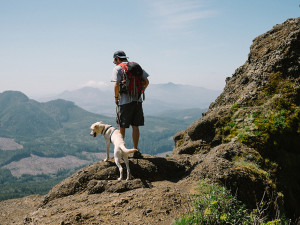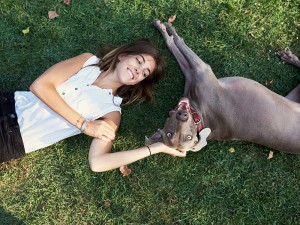Can You Overexercise Your Dog?
There’s such a thing as too much of a good thing.
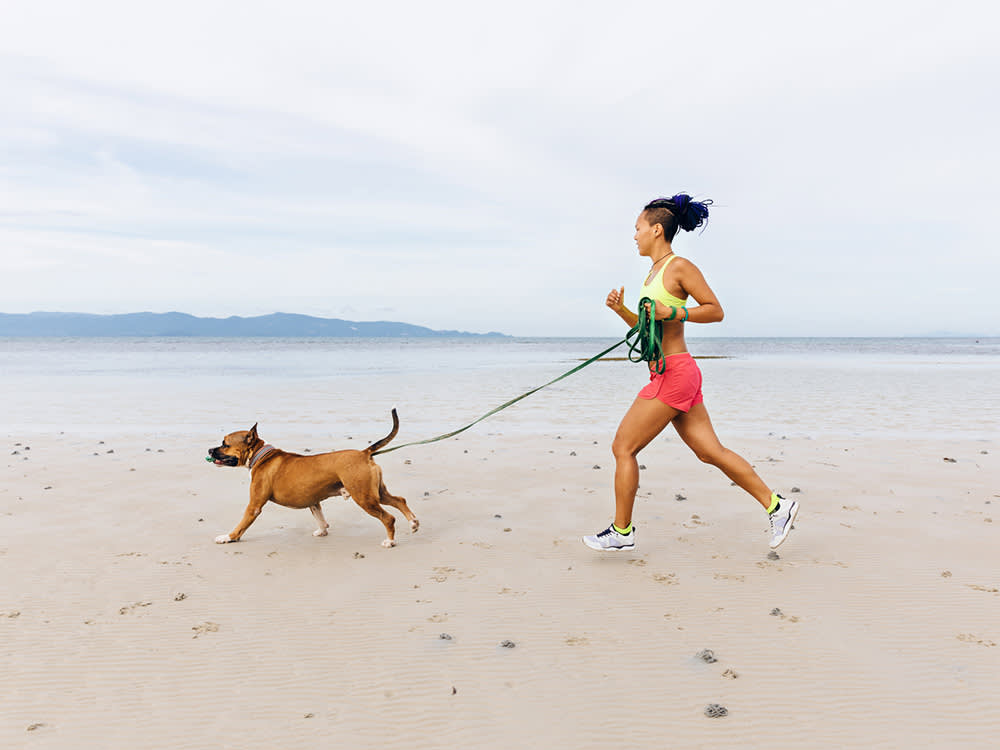
Share Article
Halfway through one of our first hikes in Austin, my dog, Cleo, sat down on a rock and refused to move.
Fair enough, I thought. When we lived in New York, Cleo’s exercise regime was limited to three walks a day, and the occasional trudge around Prospect Park. Caught up in my own excitement at being in a new city, I had overlooked the fact that she was obviously not prepared for a five-mile hike in the Texas heat. I apologized profusely as I carried her back to the air-conditioned car. She seemed to forgive me once she had cooled back down and received what she considered an adequate amount of treats.
It can be easy to think that our dogs are ready for any sort of activity at a moment’s notice. And exercising is good for dogs, right? But there can be too much of a good thing. Much like us, if a dog is pushed too far and too quickly past their physical limits, they risk getting fatigued, overheated, or injuring themselves.
“Dogs are like people, and we need to condition them to the exercise we want them to do,” says Dr. Allison Miller, a lecturer at Cornell University’s College of Veterinary Medicine. Kinship talked to Dr. Miller about how to tell if you’ve pushed your dog too far, how to prevent overexercising them, and how to condition your pup for more activity later on.

Signs You May Have Overexercised Your Dog
Whether you’re taking your dog on a hike, a run, or just a stroll around the neighborhood, monitoring their behavior and energy level is a good way to gauge how they’re doing. And if they look tired, they probably are tired.
“If they start panting more, or they’re starting to hang back instead of being in front of you or next to you, if they’re lagging behind, that would be an indication that potentially, it’s getting too long for them,” Dr. Miller says. (And if they sit on a rock and refuse to move Cleo, the hike is definitely too long for them.)
Some dogs may push through discomfort during a strenuous activity, so if you’ve taken them on a longer walk or run than usual, keep an eye on how they recover at home.
“They could have delayed soreness,” Dr. Miller explains. “If they go home, they rest for a couple of hours, and then they stand up and they’re very stiff or sore, and you notice limping, that might be an indication that the walk was too long.”
Some delayed soreness isn’t the only risk of overexercising. Repeatedly overexercising a dog can over-stress their muscles, tendons, and ligaments, and lead to a more serious soft tissue injury.
Consider the Weather
Overexercising isn’t just about distance and speed. Weather is a major factor in determining your dog’s physical bandwidth for the day. Especially during the warmer months, dogs can be at risk of heat exhaustion, even if they’re walking the same distance that they usually do when it’s cooler.
When it’s hot out, watch out for symptoms of heat exhaustion, like excessive or shallow panting, and, in more severe cases, lethargy, disorientation, drooling, and dry gums that are bright red instead of pale pink. Those could be signs that your dog is overheating to the point where it could be a medical emergency, Dr. Miller explains.
If your dog does seem to be overheating, Dr. Miller recommends putting them in front of a fan, offering them small sips of water, and splashing water in their armpits. You want to cool them down, but not so quickly that it shocks their body. Dipping a towel in ice water and draping it over them, for example, would only further trap the heat in their bodies. And when in doubt, call your vet. “It’s always safer to call,” Dr. Miller says. “Maybe they don’t need to be examined, but they could better advise you over the phone.”
Excessive heat isn’t the only weather risk to consider. During the winter, it’s important to make sure that your dog is warm, getting enough water, and not doing damage to their little feet. Dr. Miller says that she sees a lot of paw pad injuries in the winter. This can be the result of rough terrain and crunchy snow cutting up soft paws or “they’re wearing down the protective paw pad covering too fast, which might be an indication they’re doing too much.”
Every Dog Is Different
Another factor to keep in mind is that not all dogs are built for the same amount of activity in the same sort of conditions. Dr. Miller warned that brachycephalic dogs — those with short noses, such as Bulldogs or Pugs — are more at risk of breathing problems, and therefore more likely to overheat if pushed beyond their limits.
And dogs will react differently to different weather conditions. “If you have a really heavy coated, arctic breed dog like a Newfoundland or a Saint Bernard, and you’re going for a walk in the middle of summer at noon, those dogs are going to be more at risk of overheating,” Dr. Miller says. Similarly, a short-haired breed may not be able to be as active during a cold, snowy winter.
Condition Your Pup for Exercise
Whenever you’re exercising your dog, it’s important to monitor their behavior to make sure they’re not experiencing any discomfort and to provide plenty of water and opportunities for them to rest. But ultimately, one of the best ways to avoid overexercising them is to help condition them for more exercise.
Dr. Miller says it’s helpful to think about pet conditioning in the same way we would think about human conditioning. “A marathon runner is going to titrate up their runs so that they have biweekly intervals, and they get longer and longer runs, and they have rest days. They’re not going to run every single day because then they’re at higher risk of injury or overuse.”
While a marathoner may increase their distance every week or so, Dr. Miller explains that with dogs, it’s more helpful to measure walk time instead, because a dog could walk a mile in 15 minutes, or it could walk a mile in an hour, depending on how many sniff breaks it takes. If, say, your dog’s walks are usually a solid ten minutes, Dr. Miller says she generally recommends increasing the walk time by three to five minutes every other week.
And ultimately, be sure to respect your dog’s limits. If your dog is a couch potato who is just beginning their fitness journey, maybe go on that long hike by yourself, and bring them along when they’re ready.

Madeleine Aggeler
Madeleine Aggeler is a freelance journalist and copywriter in Washington, D.C. Previously, she was a writer at New York magazine’s The Cut. She lives with her dog, Cleo, who works primarily as a foot warmer.
Related articles
![Person walking their dog in the street]()
How to Leash-Train a Puppy or Dog
Don’t let your new dog walk you.
![A woman holding a dog in her arms while looking at a scenic view of the sea.]()
5 Science-Backed Ways to De-Stress Outdoors (Your Pet Is Invited)
The author of Return to Nature on the mental health benefits of getting out into various natural landscapes with your pup.
![A cute brown dog laying on a cushion looking sad or tired.]()
Can Dogs Be Depressed? Signs and Treatment for Canine Depression
Blue is a good name for a dog—not a good mood.
![A dog and a cat eating from the same food dish.]()
Help Your Chonky Pet Lose Weight
This National Pet Obesity Awareness Day, here are pro tips to help make sure your pet isn’t packing on too many pounds.
![Woman laying on the grass smiling at her dog]()
10 Ways You Can Make Your Dog’s Life Better
Number 6 will probably surprise you.
![A woman walking with her dog in a garden.]()
How to Take Your Dog On a Mindful Nature Walk
Wellness experts and animal trainers agree: A tuned-in outdoor outing can be restorative for both people and pets.

